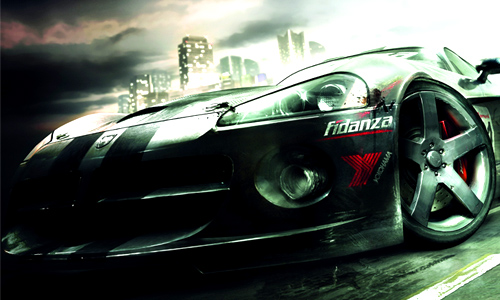Racing game specialists Codemasters are back with the latest arcade-style racing game GRID, released on Jun 3.
The game starts with a neat feature; the selection of your audio name that allows the characters to call you by your name instead of the usual “Racer 1”. The action begins after that with a pre-selected race. Upon race completion, you get to be a freelance racer as part of other racing teams. You then begin building reputation using the pre-selected cars and once you have accumulated sufficient earnings through winning races, you get to hire (and fire) your own racing team with your own cars and races. From there you advance to levels with higher difficulty.
Another feature that sets GRID apart from previous Race Driver games lies in the career mode where you’re given the ability to buy and sell pre-owned or brand new cars on “eBay Motors”, and eventually start your own car brand and earn sponsorships.
However, one feature that is lacking of here is the inability to setup a customised car (the most you can do is to select the colour scheme for your car) and upgrade a vehicle’s parts individually.
Racing Types
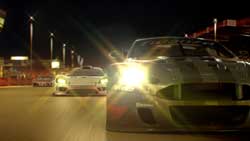 Races are held in 3 main regions – America, Europe and Japan, each with its unique race tracks anddisciplines. Europe focuses on track-based racing, America features street racing and Japanese routes consist of the infamous winding mountainous tracks that give the underground street racing and drifting a realistic feel.
Races are held in 3 main regions – America, Europe and Japan, each with its unique race tracks anddisciplines. Europe focuses on track-based racing, America features street racing and Japanese routes consist of the infamous winding mountainous tracks that give the underground street racing and drifting a realistic feel.
There are 5 race disciplines in GRID – grip racing, drift, touge, endurance and demolition derby. The first is just typical lap racing that covers a variety of types including GT cars, Open Wheel, Muscle Cars (e.g. Vipers & Mustangs) and Touring Cars.
How successful your drifting is largely depends on the angle (the closer you can drift to the apex flag, the higher your points) and speed of the drift. There are several drift challenges in the game:
- drift GP (knock out your opponent based on scores and you progress to the next round),
- freestyle drift (you score points based on your drifting skills),
- drift battle (this is a combination of freestyle drift and drift GP) and
- downhill drift (drift battle that is taken to the winding tracks on Mount Haruna in Japan).
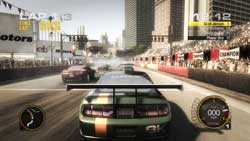
Virtually no other racing game features drifting more realistically than GRID.
You’ll even see smoke spew from your wheels as they squeal across the asphalt, obscuring your vision, which makes the race even more challenging. Codemasters sure know how to score cookie points with the gamers!
Touge focuses on one-on-one racing along the mountainous roads in Japan. There are 2 types of Touge events:
- Pro Touge (racing takes place during the day on closed roads, whereby contact with other cars is disallowed) and
- Midnight Touge (no holds barred, but the roads are opened with public cars on the road, which makes maneuvering a challenge)
You can take things to a higher level with Endurance races, where you can race for up to 24 hours real time in the “24 Hours of Le Mans” without having to stop for refueling. Unfortunately, most Moms wouldn’t have many nice things to say about this feature.
If you’re in for a test of nerves, go for Demolition Derby, whereby it’s yet another game without any rules. Unleash the destructive demon within and ram into other cars, smash them into walls, shatter their windshields, and basically just do anything you wish.
Ultimately, the first to cross the line, or the last car standing, is the winner.
However, it’s a shame that GRID doesn’t offer any off-road racing, though that could be another game altogether.
Other unique features
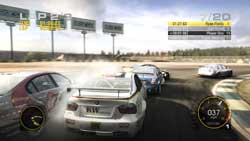 The Artificial Intelligence (AI) inGRIDis remarkably realistic, compared to a lot of other racing games (e.g. the Need for Speed series). Most CPU opponents would just try to block your way but in GRID, their unpredictable moves catch you off-guard every time.
The Artificial Intelligence (AI) inGRIDis remarkably realistic, compared to a lot of other racing games (e.g. the Need for Speed series). Most CPU opponents would just try to block your way but in GRID, their unpredictable moves catch you off-guard every time.
They can steal your position and ram into your cars, but at the same time they actually make mistakes themselves – like trying to overtake you but ending up spinning out and smashing into the walls.
Certainly, every collision will affect the performance of your car (e.g. your vehicle might lose speed) or even wreck it completely. The damage (from gears, to steering, to suspension, etc) can be seen from the corresponding icon on the right side of the screen during a race.
Fortunately in GRID, the Flashback feature allows you to “rewind” time to the exact moment that you want to (e.g. before a bumper-removing crash) and resume the race from there.
This is something really different from the other racing games where you’re left with no choice but to completely restart the race with every mistake you make. However, this doesn’t give you the license to drive recklessly as these flashbacks are limited; the higher your level, the fewer time-traveling chances you’re allowed.
GRID offers online multiplayer racing of up to 12 players and this can be done via Xbox Live or a system. However one huge drawback is the lack of split-screen multiplayer support, especially for players with no link systems or those who’re not playing it online.
Unlike other racing games, the loading page in GRID provides you with statistical data about your team and the objectives you have left to accomplish, unlike other games, which have the usual boring status bar.
Another additional plus point of the game is that it provides plenty of hints at the top to help you if you’re doing anything wrong. However, this may prove to be a distraction for the more seasoned racers, so if you’re a pro, keep your eyes on the road!
Graphics & Sounds
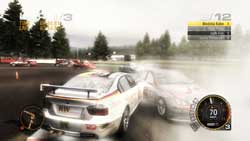 GRID will definitely impress you with its representative visuals. The menus are user-friendly, and to top it off, it has a clean presentation that’s easy on the eyes.
GRID will definitely impress you with its representative visuals. The menus are user-friendly, and to top it off, it has a clean presentation that’s easy on the eyes.
The frame-rate is fast, which adds more points for realism. You’ll marvel at the graphical detail that GRID offers, notably the camera tilt as you do drifting or take bends around the twisted roads. The interior view of the car is really cool as well, with a realistic view of the dashboard and steering wheel.
Apart from the slightly blurred background at times, the visuals are near flawless with great rendering, though UrbanWire experienced occasional staggers in loading time. But the powerful visuals in GRID definitely make up for that.
There will be voiceovers reminding you of the objectives of the race (e.g. to fulfill a sponsorship deal) and this may become rather distracting. Thankfully, this feature can be disabled in the menu.
Unfortunately, GRID doesn’t score well with UrbanWire in terms of the quality of the engine noises – they don’t sound very solid and all of them sound monotonous.
There could be some variations in the sound of cars getting mangled too. In addition, the in-game soundtracks are limited and do little to set the right mood for some real racing.
The other parts of the audio such as ambient sounds (e.g. clash noises) are excellent though.
Overall
GRID offers players a dynamic and solid racing experience, with sufficient variety of racing types to satisfy racing purists and racing rookies alike. Complete with good visuals and some interesting features, GRID is definitely worth more than just a drive-by.

Gameplay: 8/10
Graphics: 9.5/10
Sound: 6.5/10
Control: 9/10
Overall Rating: 8.25/10
Images courtesy of Games Press.

